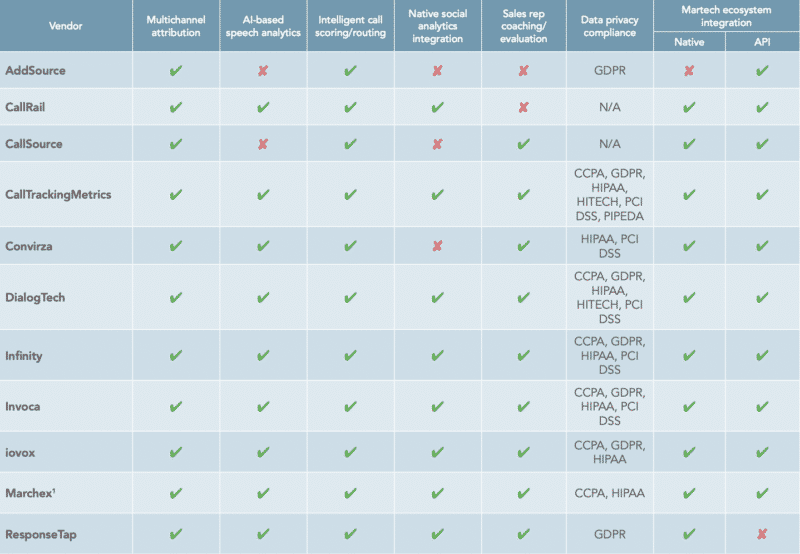Digital transformation alters the way you see your customers, even if you see them in person.
What is call analytics and how does it deliver key insights to marketers?
Call analytics software manages the inbound phone channel (including both landlines and mobile phones), handling tasks from assigning call tracking numbers to measuring, monitoring, analyzing and reporting the resulting caller data and campaign results. These platforms provide call tracking, recording, routing and attribution tools to enable these functions.
Faced with the worst public health crisis in more than a century, U.S. consumers used the telephone more than ever before. As a result, inbound phone calls have become fundamental to many digital marketing strategies, and the conversations that occur provide valuable insights into caller wants and needs. Marketers that can mine phone conversations for keywords spoken, caller intent and conversions can make essential connections between phone calls and the digital campaigns that drive them.
The benefits of using call analytics platforms include: Improved multi-channel attribution; a more unified view of the customer; optimized campaigns; better sales staff productivity; and better sales performance.

Explore platform capabilities from vendors like CallRail, Invoca, CallSource, DialogueTech and more in the full MarTech Intelligence Report on enterprise call analytics platforms.
Data models in your CX strategy
Today’s marketers have access to more data than ever before. The increasing number of devices, and people using them, has allowed brands to personalize customer experiences. Yet relying solely on technology and data could end up doing more harm than good.
“Intuitively, we as marketers in this digital transformation age think, ‘Technology, data…that will help us,’” said Frans Riemersma, CEO of MartechTribe, in his MarTech presentation. “So what do we do? We’ll equip our customers with even more technologies and cookies and what have you. It’s more data and more technology, but it doesn’t mean we see the customer.”
He added, “So what we’re actually trying to do is to create a snapshot of customer needs and then try to figure out what the data and technology are doing so we can cater to their needs and speak to them in a relevant way.”
Here are three experience models that will help you determine what levels of CX strategy integration are present within your marketing organization:
- Channel-driven — focus on tracking and monitoring audiences in their channels.
- Data-driven — focused on getting to the root of why specific audience events occurred. They rely on marketing databases and dashboards to analyze many customer channels, all to remedy any issues and understand their market segments.
- Journey-driven — reviewing the customer journey from a holistic perspective should be the main goal of your CX strategy.
Personalization over attention grabbing
“Marketing is no longer about grabbing attention, but rather it’s about creating real connections, building that emotional resonance and spurring action throughout the customer journey,” said Nina Butler, Director of Event Experience for B2B gifting platform Alyce, at the recent MarTech conference.
In other words, for marketers to make meaningful connections with potential customers, they have to make the most out of every engagement. They have to think in terms of not just alerting prospects but crafting moments for them.
During the pandemic, in-person events and meetings went virtual, and customer interactions became much more dependent on digital communications. But this digital transformation in customer relationships had been underway many years prior to 2020. The risk with this transformation is that many of these touches have become rapid-fire and impersonal.
“As automation and advanced marketing technology has made our lives easier, we’ve also created more processes in our workflows and, as a result, more touches than ever,” said Butler.
Quote of the day
“I’m increasingly convinced that the single most powerful sales tactic is to genuinely not care if you land the prospect or not.” Kirk Williams, Owner of ZATO Marketing
The post Different ways of seeing the customer: Friday’s Daily Brief appeared first on MarTech.
(47)
